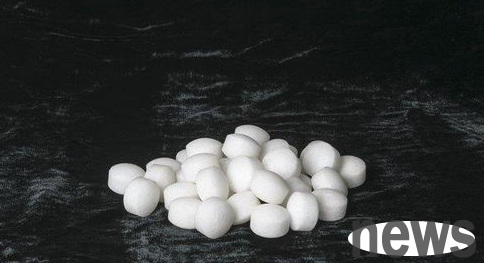I believe everyone knows mothballs. Mothballs can prevent insects, moths and mildew, so we often put them in the wardrobe. But if your dog likes to rummage through boxes, then the owner should be careful that the dog will take mothballs. On the market, there are two types of mothballs, one is natural mothballs, which emits a relatively fragrant smell, while the other is synthetic mothballs, which have a pungent and unpleasant smell and are harmful to dogs and humans. Once a dog takes synthetic mothballs, it often causes symptoms of poisoning. Sometimes even if it smells, it may damage the body.

1. Why are mothballs harmful to dogs? Because the two harmful components of naphthalene and para-dichlorobenzene are aromatic organic compounds extracted from the branches and leaves of camphor trees, and the ingredients of synthesized mothballs are mainly naphthalene or para-dichlorobenzene. Since the cost of making synthetic mothballs is relatively low and natural camphor resources are limited, synthetic mothballs once replaced natural mothballs. Both naphthalene and para-dichlorobenzene can cause poisoning in dogs, but the toxicity of para-dichlorobenzene is about half that of naphthalene.
Dogs accidentally eat mothballs and can get poisoned. There is one type of disease. In mild cases, vomiting is severe, and liver and kidney damage is caused by vomiting. Data shows that dogs are generally poisoned because they take mothballs, but naphthalene can also be absorbed into the dog's body through the skin and air. It will not only affect the dog's gastrointestinal system, but also destroy the dog's red blood cells, leading to anemia. After dichlorobenzene enters the dog's body, nervous system dysfunction often occurs, and in rare cases it will also damage red blood cells.
2. The impact of mothball poisoning in dogs can lead to anemia in severe cases
If the dog takes mothballs that are dichlorobenzene, although the toxicity is small, it can also cause symptoms such as vomiting and loss of appetite, and cause nervous system dysfunction, resulting in symptoms such as confusion, difficulty walking, drooling, and epilepsy. When the dog's skin is exposed to para-dichlorobenzene, it may feel like it is burned. The smoke produced by naphthalene and paradichlorobenzene can irritate the dog's nose, eyes and lungs, causing it to turn red, runny nose, sneeze and cough.
If the dog takes naphthalene mothballs, it will first damage the gastrointestinal system and cause symptoms such as vomiting and loss of appetite. It will also damage the dog's red blood cells, causing symptoms such as weakness, drowsiness, blue gums, and difficulty breathing. In severe cases, it will also lead to liver damage or cataracts.
If the packaging bag of mothballs is lost, the owner can use this method to test whether it is natural:
1. Prepare half a cup of warm water
2. Add 3-4 tablespoons of salt
3. Add some salt appropriately, stir while adding until the salt no longer dissolves
4. Put the mothballs into salt water
5. Natural mothballs will float up, and the synthetic mothballs will sink

3. How to diagnose mothball poisoning in dogs? Smell the gas exhaled by the dog
Because mothballs dissolve very slowly in the dog's body, the owner may not notice symptoms of dog poisoning after a few days. Once you suspect that the dog has taken mothballs, the owner can first smell the air it exhales, which will generally smell the mothballs. The owner should take it to the pet hospital for examination, but remember to bring the mothball packaging bag so that the doctor knows which mothballs the dog is taking.
4. How to treat mothball poisoning in dogs? In mild cases, it is vomiting and taking medication, and in severe cases, it is oxygen and blood transfusion
The pet doctor will first evaluate the dog's poisoning. Because mothballs dissolve slowly, the dog will vomit continuously for the first 2 hours. At this time, the doctor will consider inducing vomiting and excreting undigested mothballs. The dog will then undergo blood tests and X-rays to see if there is anemia or liver damage, and whether there is mothballs in the stomach and intestines. If necessary, dogs need intravenous infusion, which can protect the kidneys to a certain extent and excrete toxins.
If the dog experiences severe symptoms of convulsions or epilepsy, it is necessary to take medication to relieve it, while reducing stomach irritation and reducing gastric acid production. Because naphthalene can damage red blood cells and cause insufficient blood oxygen, dogs also need oxygen delivery. In severe cases, the mucous membranes and blood of dog teeth will turn brown, which is caused by methhemoglobinemia. However, it can be solved by drugs such as ascorbic acid, methylene blue or N-acetylcysteine, and blood transfusion is also required if necessary.
If the owner takes the dog to the pet hospital in time and is less poisoned, the dog will soon recover from health after proper treatment. However, if the dog experiences anemia or liver and kidney damage, the situation will be more serious and the dog needs to be hospitalized for treatment. So it is best not to buy synthetic mothballs, as it will cost a few dollars and will not be good for people.